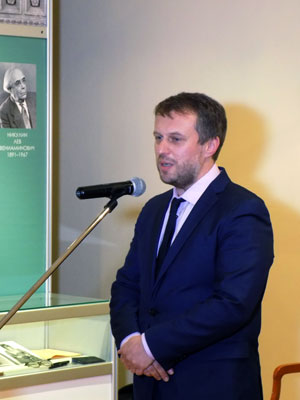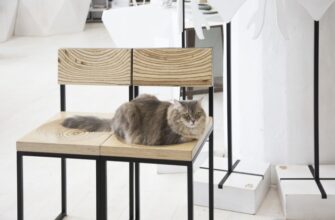The Museum of A. S. Pushkin together with the Auction house “Litfond” and the Museum of architecture Shchusev, opened the exhibition in Lavrushinsky lane, 17 dedicated to the life of Soviet writers. It describes the unique Soviet experience of the galaxy of culture in one space. This experiment was unthinkable for Russia of tsarist times, it is extraordinary for world experience and for today understanding.
The idea of construction of the House of writers, a “town room” for them, belongs to M. Gorky. The house was built in 1934-1937 as a cooperative apartments, then in 1947-1948 it was enlarged for war authors.
Among those who lived here we see famous writers of today and also writers already forgotten. Among those who are known for everyone there are the creator of the slogan about Khrushchev “thaw” Ilya Ehrenburg, the educator Anton Makarenko, the Nobel laureate Boris Pasternak, author of “Lonely canvas turning white” Valentin Kataev, the famous creators of the image of Ostap Bender Ilya Ilf and Evgeny Petrov, and many others. Major cultural persons like: Anna Akhmatova, Alexander Vertinsky, Sergei Lemeshev, Olga Lepeshinskaya, Maria Yudina and many others visited whiters-residents here.
Eugeniya Kataeva, daughter of V. Kataev, shared with “E-Vesti” with her children’s feelings on living in this house: “When you live there, it seemed absolutely normal. I didn’t have the feeling that it’s something special. Now, when I remember all this, my hair stand on end, and I think, “God, you saved me from so many things!”. It was very dangerous, because people were “decimated” from our house. As one of such examples, whom I remember from the evacuation, is D. Bergelson, he was a completely fascinating man. We were young, we mocked and laughed at all adults, including him. I had a very difficult time then, I could not sleep, the sound of the Elevator caused me wild terror and fear. I prayed something in my own words, and we were afraid to tell our parents of my fears, because it could seem I think badly about dad. I realized that I have a wonderful dad, but I lived in fear that he might be arrested. The girls and me were going to go to school, and we always talked about whose apartment this time… What You said about the items – it’s not collectible items, and those items that remain in everyday life of families who keep the family life of those children’s fears. Pay attention to the bells from Vsevolod Ivanov. It is the relationship with their departed family.”
Special world of this entrance existed not only in the 1930s, but also later. The families of the writers communicated with each other and preserved a reverent memory of their ancestors, neighbours and guests to the present day. The main mastermind behind the creation of the exhibition was the daughter of the writer L. Nikulin – translator, bibliographer and writer

, who was born in this house, lives here all her life and dedicated her books “Lavrushinsky 17. Family chronicle writers ‘house” and “Lavrushinsky, 17. Family and books, friends and enemies” to this place. O. Nikulina preserves valuable memories of childhood including Anna Akhmatova visits, but also remembers about Maxim Shostakovich, FR. M. Ardov, etc. The household is filled with her emotional episodes that formed the basis of the literary heritage and shows the life of the Soviet elite.
Granddaughter of V. Kataev – journalist Tina Katayeva told us about how was born the idea of the exhibition: “the Idea to tell about the house was born from the tenants of the house. This is our old guard – the children of those writers who entered this house in the 1937-39 years. Moreover, this building in Soviet times was a part of the renowned handbooks as having artistic value. It is quite clear that it was the intelligentsia, a Soviet elite is something special and different from international understanding of the word. When it merges with the writer’s fate, it gives a very interesting alloy. If you look at the biographies of writers represented here – there is the Red Army together with the white movement – there is a connection of incredible events that occurred in the country. Each of them shows here human destiny – there is a number of people combined in a space, but they could never meet in other situation”.
The idea of implementing the current exhibition belongs to the Auction house “Litfond” which attracted here the Pushkin Museum and its staff.
Auction house “Litfond” conducts the auction of rare books, autographs, manuscripts to private collectors dated from the XIII-XIV centuries and ending with contemporary art at the turn of 20-21 centuries, charity auctions, meetings with experts in the areas of collectibles, Museum and archived workers.

As General Director of “Empire” Sergei Burmistrov told to cultural-political magazine “E-Vesti”: “This exhibition can open something new. For example, speaking for myself, I saw here a few writers that I have not heard before. At least someone from literary critics, who visits this exhibition, he may want to write something about forgotten writers. The fact is that in Soviet times the writing became a craft. In those days the writer received large fees and other benefits from the government to carry out those ideas that were necessary for society. Of course, among the Soviet writers there are people whose work was meaningful. Unfortunately, many of them are not studied and we do not remember them, some of them are unknown by Google, but this does not mean that their work was insignificant.”In addition to the organizational support of the project provided by S. Burmistrov, he also exhibited some things from personal collection: “There are few things related to Anna Akhmatova. She spent quite a lot of time in Moscow, mostly on Bolshaya Ordynka street where lived the family of the writer Viktor Ardov. These things are connected with this place, her second home: the autograph on her book as a gift to Nina Olszewski, wife of Viktor Ardov, one of the last autographs before her death, and her early photography with Gumilev, which she wrote and presented on the birthday to Nina Olszewski. In another showcase there are the memories of Ilya Ehrenburg about the publication of the journal Helios in the days when he lived in Paris.”
In the exposition the writers are divided on the entrances as they lived. Each of them allotted the equivalent of biographical scoreboard and a display of things from the family archives and private collections. Pictures, clocks, books, autographs, letters, etc do not only give sense of personal space of the writer to the visitor, but also transfer the spirit of a bygone Soviet era as a whole. The exhibition will work from 27 December 2016 to 29 January 2017.




